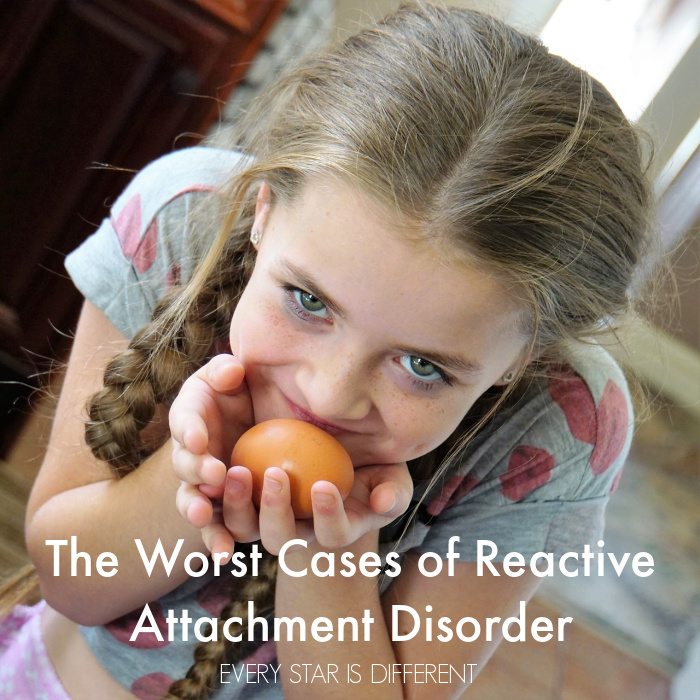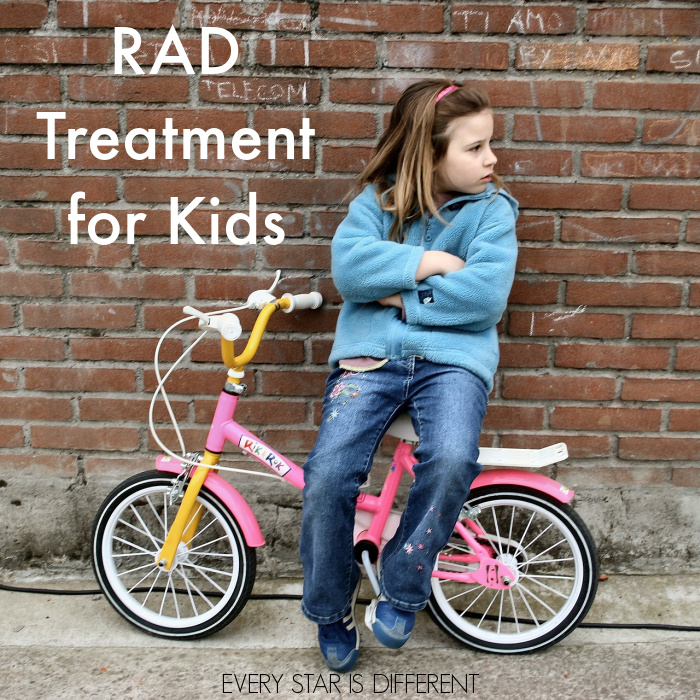Lying can come with dangerous and unsafe consequences for all involved, especially when a child lies to professionals and adults in positions of authority.
Thankfully as a child heals from RAD, lying can diminish as well.
There are many things caregivers can do to help a child with this behavior to help circumstances improve over time.
Reactive Attachment Disorder and Lying
Why Do Children with Reactive Attachment Disorder Lie?
There are many reasons children with RAD lie.
Lying to others may have been a way to survive past trauma. It was necessary and became normal.
Lying to one's self may have been a way to survive past trauma as well. If a child can convince themselves that things are okay, even when they're not, the brain and body can manage to endure more.
Lying helps a child with Reactive Attachment Disorder get what they want, whether that is relationships, objects, experiences, or an escape from family, love and attachment.
Lying is a way to manipulate others and feel more in control. RAD kids crave control and are willing to do what it takes to maintain it.
Lying can provide a natural high that feels good. Once that high is felt, it may be sought after again and again.
Lying is also a great way of pushing people away.
A child with Reactive Attachment Disorder may lie because of one or many of these reasons.
Once lying starts, it's very hard to stop.
It's important to know and understand that lying is a fact of life with Reactive Attachment Disorder.
6 Ways to Navigate Reactive Attachment Disorder and Lying
Accepting that lying is going to occur with RAD is the first step. From there the best thing to do is make a plan to navigate the behavior.
Over time we've found many ways to do this in our home.
1. Provide Necessary Supervision
One way to eliminate or minimize lying is to make sure that a RAD child is being supervised as often as is necessary.
Supervision will look different depending on the age of the child with Reactive Attachment Disorder.
Supervision eliminates situations where a child has opportunities to do things to lie about.
A child with Reactive Attachment Disorder will need much more supervision than typical peers. Be sure to set up plans for supervision while at school and other required environments.
2. Don't Ask Questions
Lies usually come when confronted about a particular incident or behavior.
"Did you...?"
"Why did you...?"
"When did you...?"
"Where is...?"
"How did...?"
"Who did you...?"
"What happened...?"
Questions can easily trigger a fight, flight, or freeze response. Emotions escalate.
A child with Reactive Attachment Disorder will rarely answer honestly.
If you don't ask the questions, you're taking away opportunities to lie.
It's safe to assume you already know the answer to the question you wanted to ask.
There's a slim chance you may be wrong. If you are wrong, you can apologize later.
If you're unsure, don't bring up the situation until you know the facts. When it is time to address a situation, you may find our way of addressing behaviors is beneficial.
3. Limit Interactions
The more people a child with Reactive Attachment Disorder interacts with, the more opportunities there are to lie.
Triangulation and parent splitting are RAD specialties.
A child with Reactive Attachment Disorder is a genius at finding inconsistencies and using them to her advantage, pitting people against each other.
When it comes to working with teachers, therapists, professionals, etc. show up and volunteer. Attend every meeting and appointment.
If a teacher, therapist, professional, etc. is not comfortable with the RAD child and caregiver attending every appointment together that's scheduled for the child, find someone else who is.
When it comes to classroom behaviors, meet with your child's teachers to come up with a plan for clear and accurate communication.
The more all parties know, the fewer opportunities there are to lie, especially when there is supervision and questions are eliminated.
4. Document EVERYTHING
There will be times where you will be accused of doing something that your RAD child has lied about. In these situations, all you have is documentation on your side.
Documentation can take many forms. Caregivers can keep binders of every appointment, assessment and report.
Photographs and videos are great forms of behavioral and social documentation.
Food and hygiene logs can be helpful.
Receipts for items purchased and provided for the child can also be a great way to disprove accusations.
When raising a child with Reactive Attachment Disorder, it's important to keep documentation of everything.
5. Show It's Safe to Tell the Truth
A child who has experienced significant trauma and learned to lie to others and/or to themselves to stay safe, does not trust that telling the truth will bring about positive consequences.
When raising a child with Reactive Attachment Disorder, it is so incredibly important to show that telling the truth is worth it.
This does not occur when a caregiver chooses to give severe consequences when a RAD child is caught lying.
It does occur when a caregiver celebrates honesty in a way that feels safe for a child with Reactive Attachment Disorder.
6. Model Honesty and Consistency
A RAD child who struggles with lying will not stop if she sees those around her being dishonest and inconsistent in even the smallest ways.
She can detect the slightest fib or lie better than most. When a caregiver is dishonest in even the smallest way, a child with Reactive Attachment considers the caregiver to be a liar.
It is extremely important to be honest about your thoughts and emotions with a RAD child once you are able to remain regulated and respectful while sharing.
Being consistent 100% of the time is hard. No one is perfect at it, but the more consistent you are, the better the chances that the lying will lessen over a long period of time. It is most likely to happen when a child with Reactive Attachment Disorder feels safe and is healing.
Lying may continue to be an automatic response in a situation, but if the caregiver is willing to pause and allow the RAD child to try again without accusation or punishment, telling the truth will become easier over time.
Please keep in the mind, it's up to the child with Reactive Attachment Disorder to decide to change and stop lying.
A caregiver cannot force change, but instead must follow the RAD child's lead. Until a child is ready, it's up to the caregiver to give consequences, showing honesty and consistency.
How to Give Consequences for Lying
As with all behaviors related to Reactive Attachment Disorder, natural and logical consequences are best.
Do your best to come up with a natural or logical consequence related to the lie told to you and others.
One logical and natural consequence we've found works with our girls is sharing behaviors with others involved in the lie. We bring documentation and discuss the situation.
Our child with Reactive Attachment Disorder is present for these discussions. If behaviors occur in the presence of others as we calmly and rationally discuss the situation, all are there to witness them.
Once all involved have discussed the situation, the RAD child has the opportunity to apologize and make amends, or refuse. The other party has the choice to forgive or not.
When documentation is not available or the lie does not effect those outside of the home, the logical or natural consequence depends on the behavior.
It is best not to give a consequence in the heat of the moment. Pause to process through how the consequence effects you, the RAD child, and others in the home.
When all parties are regulated, share that you know about the behavior. Do not open the floor to discussion. Simply give the consequence. State the boundaries and consequences for future behaviors related to this topic, and move on.
Do not engage in an argument.
If you are wrong about the lie, you can apologize later. You'll be correct more than ninety percent of the time.
No punishment, incentive, or reward is going to motivate a RAD child to stop lying. Continued arguments will only lead to more lies and frustration.
Though it's extremely difficult, try to understand that reactive attachment disorder and lying has nothing to do with you, and all to do with the RAD child trying to survive in a world where they feel extremely unsafe.
Nothing about it is okay, but it's going to happen.
Over a long period of time healing can occur. Lying can lessen. Just keep focusing on what helps your child with Reactive Attachment Disorder feel safe. Safety comes first. The rest will then fall into place.
If you enjoyed this post, you may also like the following resources.









No comments:
Post a Comment